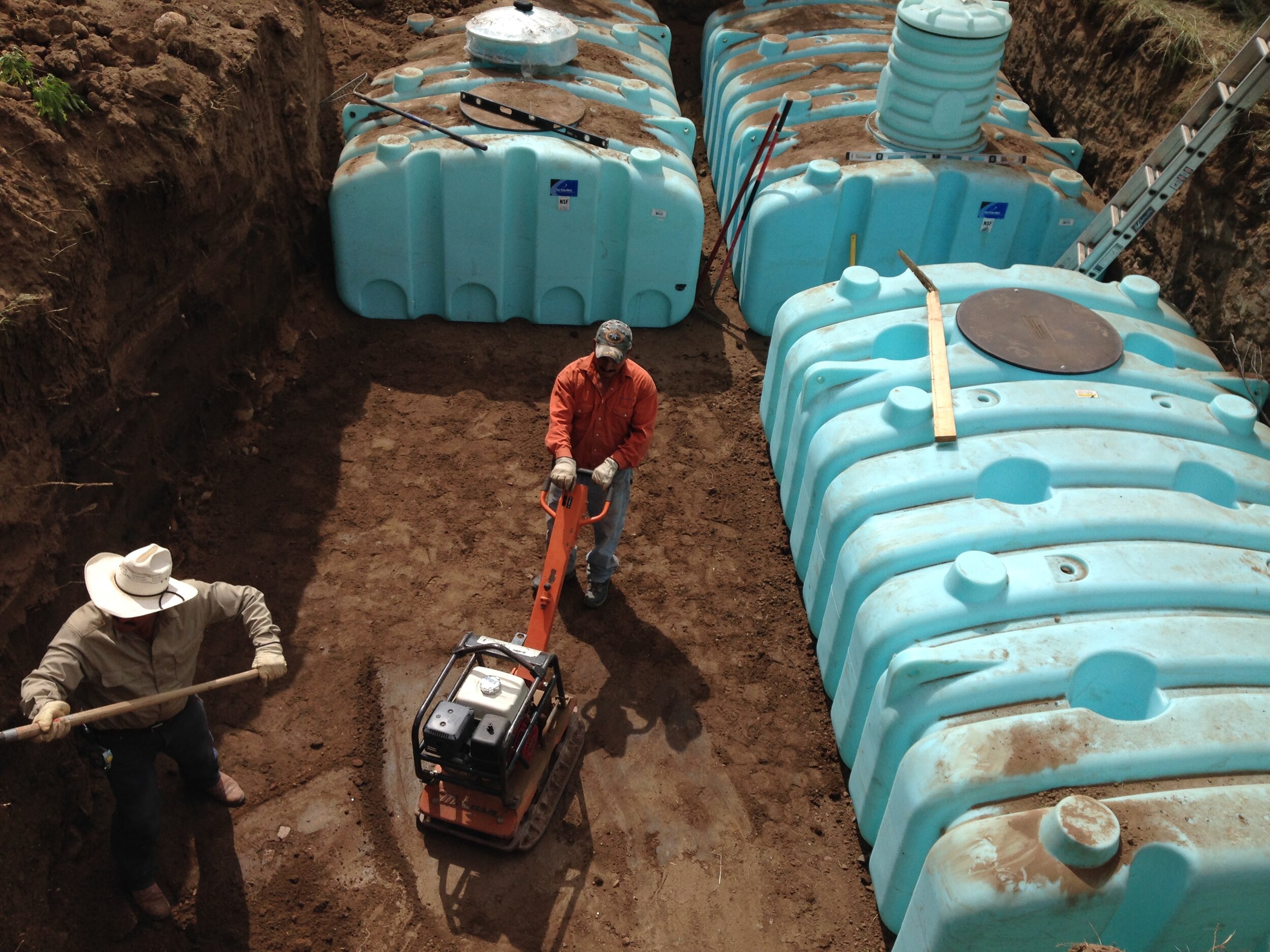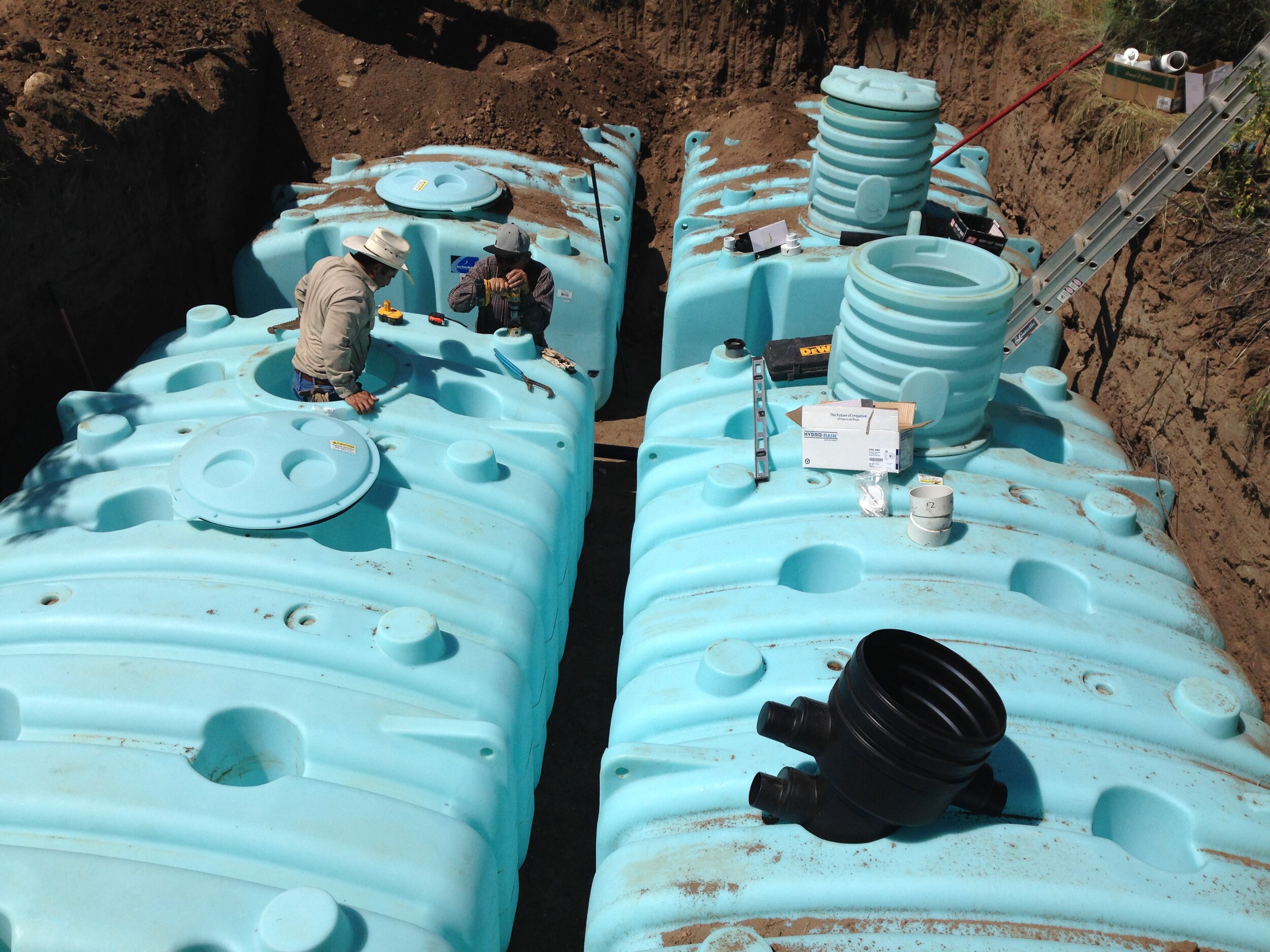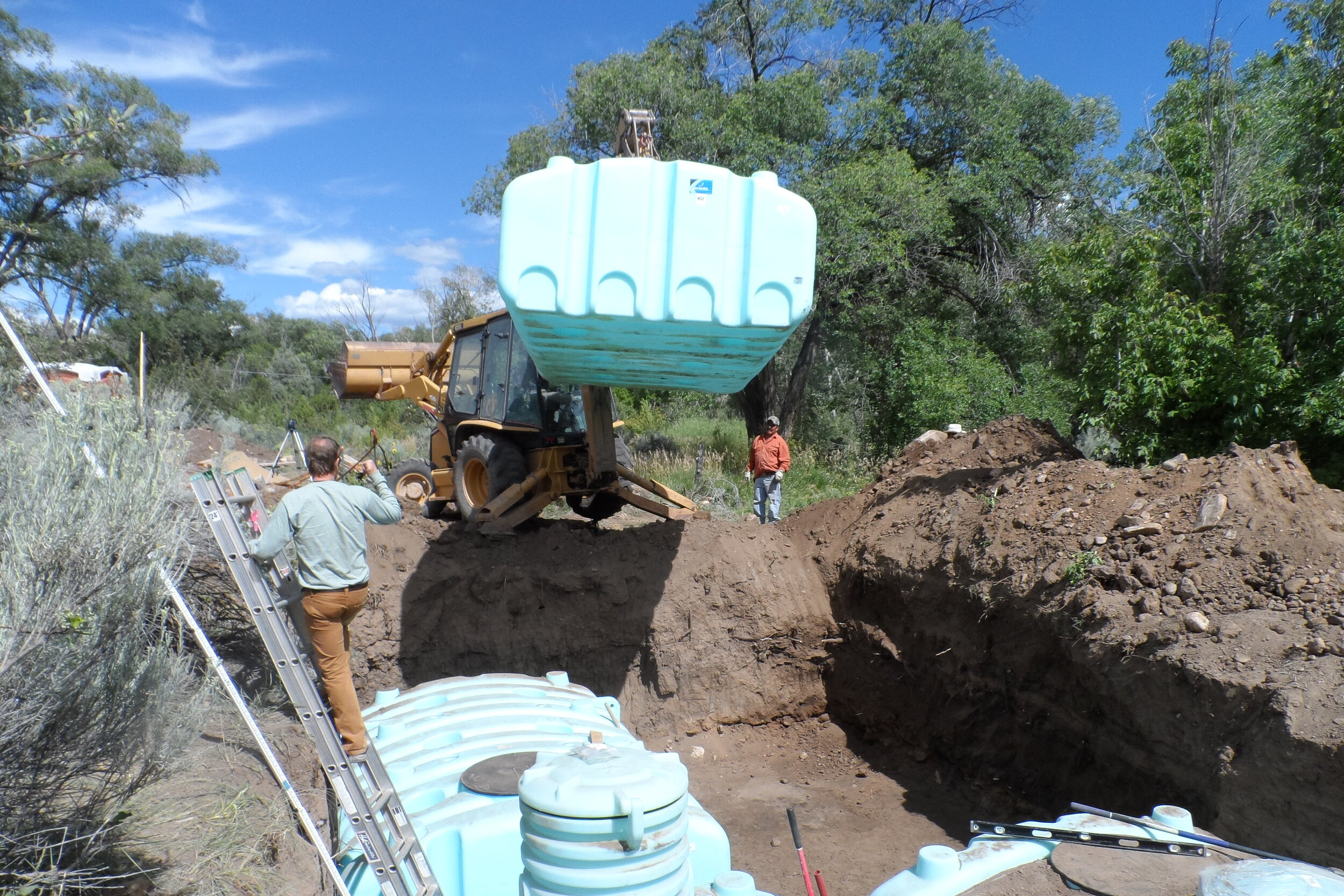Water is a crucial resource, especially in the arid Southwest.
This homeowner had a vision to reduce their demand on the local water municipality, while still supporting a thriving landscape. One of our specialties is the design, permitting, and installation of rainwater harvesting systems. It was a perfect match!
Active rainwater harvesting can be broken down to three major steps: collection, filtration, and distribution. First, we calculated the collection potential of the home’s roof, and worked with the client to determine the right-sized system for their needs. This system has a 10,000 gallon capacity, and collects 37,000 gallons each year, on average. With our site carefully chosen, we installed the tanks. A network of plumbing carries water from the gutters to the underground cisterns, and along the way it is filtered to remove debris that would cause problems further down the line.
When the automated drip irrigation system calls for water, a pump brings it up from the cisterns and into utilization for the homeowner’s native landscape and fruit orchard. As for the giant hole and bright blue cisterns? You would hardly know they were there, as they’ve been covered with soil and planted with native grasses and wildflowers. If there’s a drought, the homeowner can still choose to supplement their tanks with city or well water. Active water harvesting, while more parts-intensive than Passive, can be an excellent solution for the sustainability and beauty of your site.




